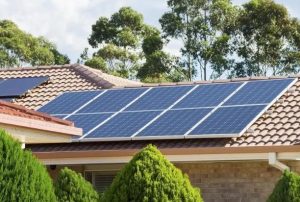Comparing Photovoltaic Cells vs Solar Panels: What's the Difference?
In the vibrant world of solar energy, two terms frequently emerge at the forefront of discussions: photovoltaic (PV) cells and solar panels. While often used interchangeably by the layperson, these terms encapsulate distinct components of solar technology. Delineating between PV cells and solar panels is essential for understanding the nuances of solar energy generation.

The Building Blocks: Photovoltaic Cells
Photovoltaic cells are the fundamental units of solar technology. They are the miraculous devices that convert sunlight directly into electricity through the photovoltaic effect. Typically made from silicon, these cells operate on the principle of exciting electrons in a semiconductor material, thus generating electric current. PV cells come in various forms, including monocrystalline, polycrystalline, and thin-film, each with different efficiencies, lifespans, and cost profiles. The efficiency of modern PV cells can range from 15% to 22%, making them a potent source of renewable energy.
The Ensemble: Solar Panels
Solar panels, on the other hand, are assemblies of multiple PV cells designed to work together. A standard solar panel for residential use might contain anywhere from 60 to 72 PV cells. These panels are encased in protective materials and are equipped with an anti-reflective coating to enhance their efficiency and durability. Solar panels are the visible components of a solar energy system, mounted on rooftops or ground-based solar farms. Their purpose is not just to generate electricity but to do so at a scale that's practical for home, business, or utility use.
Integration and Application
One of the clearest distinctions between PV cells and solar panels lies in their application and integration into solar energy systems. While a PV cell is the primary technology for converting sunlight to electricity, a solar panel serves as the functional unit that people install to meet specific energy needs. Beyond individual panels, a complete solar energy system includes additional components such as inverters, which convert the direct current (DC) electricity generated by the panels into alternating current (AC) electricity that can power a home or be fed into the electrical grid.
Efficiency and Cost Considerations
When evaluating solar options, both the efficiency of the PV cells and the overall output of solar panels are crucial factors. Advances in technology and manufacturing processes continue to improve the efficiency and reduce the cost of both PV cells and solar panels. The choice between different types of PV cells (monocrystalline, polycrystalline, or thin-film) within a solar panel can significantly impact both the initial installation cost and the long-term energy yield of a solar energy system.
A Collaborative Force
Understanding the difference between photovoltaic cells and solar panels is key to appreciating the sophistication of solar energy systems. While PV cells are the core technology that makes solar power possible, solar panels are the workhorses that bring this technology to life, harnessing the sun's energy on a scale that can power everything from small gadgets to entire cities.
As we continue to explore and innovate within the realm of solar energy, the collaboration between PV cells and solar panels exemplifies a perfect blend of microscopic ingenuity and macroscopic vision. The distinction between photovoltaic cells vs solar panels reflects not just a technical nuance but a comprehensive approach to harnessing solar energy, illuminating paths toward a sustainable and renewable energy future.